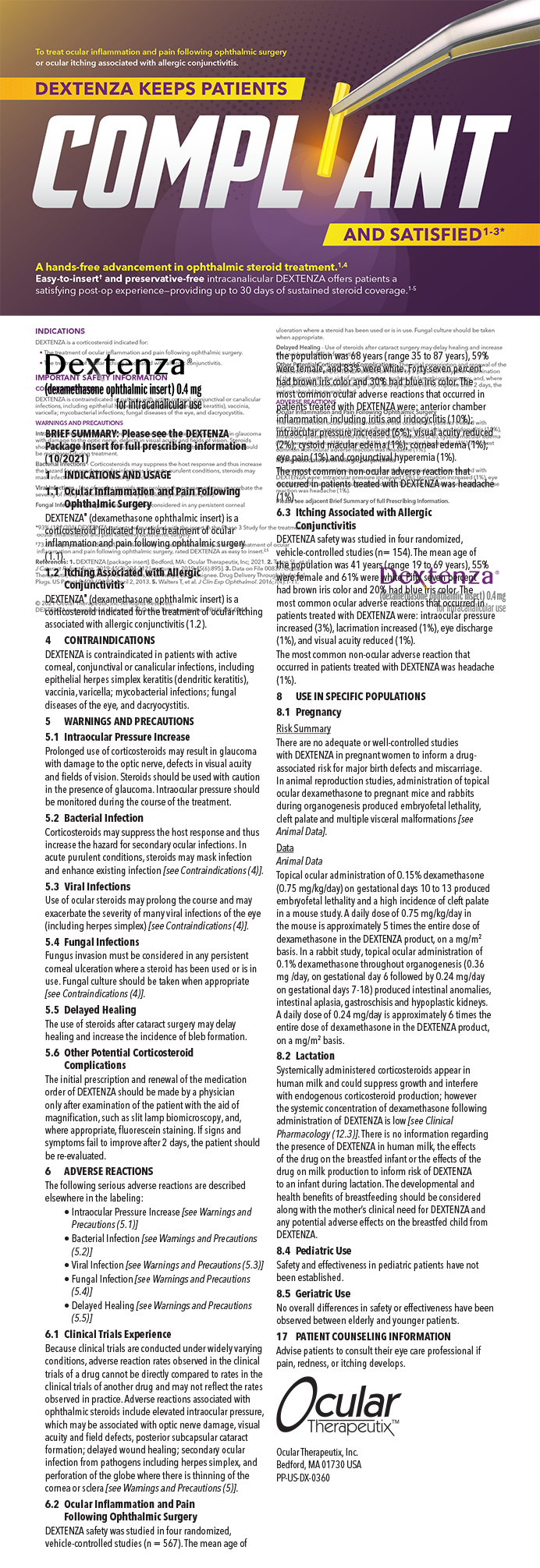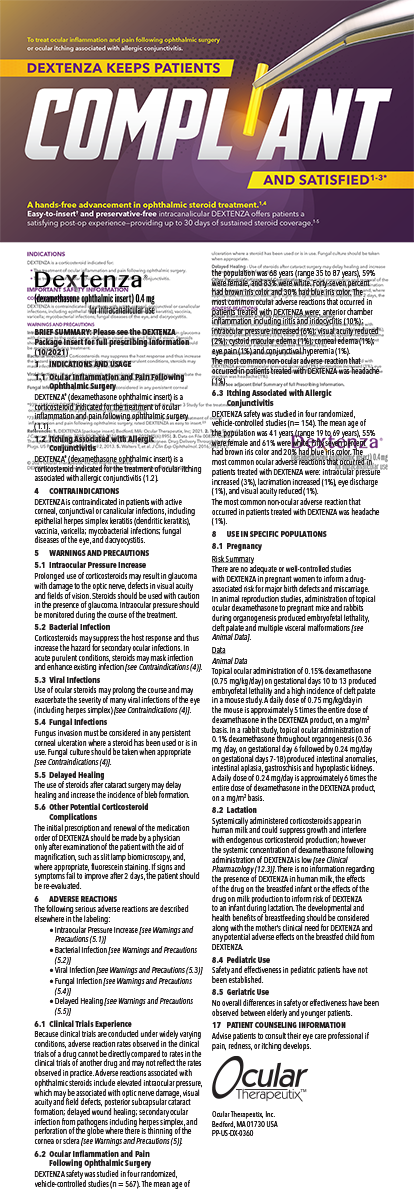STEPHEN COLEMAN, MD
With an approximately 16% image magnification effect with this spectacle correction, surgery for this patient can truly be life changing. Two things are certain if surgery is the choice. First, the primary procedure should be lens based. Second, the operating surgeon should have ready access to an excimer laser in order to fine-tune the surgical outcome with a corneal procedure to achieve spectacle independence. IOL calculations should take into consideration the fact that small, myopic postoperative refractive errors are more straightforward to correct with a surface laser procedure than small, hyperopic errors. Access to a femtosecond laser would be beneficial to surgical planning in this case, either for treating the astigmatism at the time of refractive lens exchange (RLE) or for perhaps making a flap prior to lens surgery to be used postoperatively for a LASIK enhancement.
STEVEN J. DELL, MD
It is fairly difficult to make a patient like this unhappy postoperatively, particularly if he or she has already become presbyopic. However, even relatively young adults with this refraction are typically quite symptomatic. I would offer RLE that took into account the special considerations warranted for very small eyes. For instance, I would discuss with the patient the possibility of a refractive surprise as part of the informed consent.
In addition to the anatomical challenges of operating on a crowded anterior segment, the surgeon must also watch for the possibility of choroidal effusions. I believe it is helpful to keep in mind that, in highly hyperopic eyes, it is not a question of if, but rather when, the patient will undergo lens removal. Given the enormous refractive benefit, the reduced risk of angle-closure glaucoma, and the difficulties associated with surgery on a large, dense lens, I believe it makes sense to intervene early. Because several IOL options would work well in this situation, my choice would be governed by the patient's habitual visual requirements, his or her ability to tolerate some degree of monovision, and the preferences he or she expressed during the consultation process.
JOHN A. HOVANESIAN, MD
RLE would be my procedure of choice for this patient, probably with a presbyopia-correcting IOL. The correction is beyond the reasonable range of a refractive laser procedure, and the FDA has not yet approved the Visian ICL (STAAR Surgical Company) or the Verisyse IOL (Abbott Medical Optics Inc.) for hyperopia. Although the patient's age would not likely change the procedure I recommended, it would alter the discussion, because young patients take for granted the accommodative range that they have always had and would be giving up with a pseudophakic implant.
SAMUEL MASKET, MD
Irrespective of the patient's age, given a spherical equivalent of +8.00 D, the only viable and available procedure in the United States with the potential for long-term success and stability is RLE. The patient can consider and have presurgical contact lens trials for varying degrees of monovision. I would likely use toric IOLs to manage 2.00 D of astigmatism (presumably corneal in origin), although one could consider presbyopia-correcting IOLs and manage the astigmatism with intraoperative limbal relaxing incisions and/or postoperative laser vision correction. I have recently used the femtosecond laser with great success for similar cases for laser cataract surgery. Hyperopic (toric) phakic IOLs are not available in the United States, and corneal laser refractive surgery cannot be considered for that degree of hyperopia.
JOHN A. VUKICH, MD
This patient is best suited for RLE. The patient's preexisting astigmatism clearly demonstrates the need for an approved toric multifocal IOL in the United States. Without the availability of this option, I would plan a staged procedure, starting with the creation of a femtosecond flap that would not be lifted initially. Following RLE with a spherical multifocal IOL, the LASIK correction of the residual refractive error would be performed utilizing the precut flap.
J. TREVOR WOODHAMS, MD
High hyperopes seldom do well with keratorefractive treatments despite the motivation that they may feel after any degree of contact lens failure. More than 10 years ago, at the annual ASCRS meeting, I reported that central corneal steepening greater than 49.00 D resulted in a significant loss of BCVA. Nowadays, of course, ophthalmologists know this problem was caused by induced higher-order aberrations. Furthermore, LASIK or PRK hyperopic corrections usually regress in 1 to 2 years, as the epithelium fills in the paracentral stromal moat.
In a patient with less than advanced presbyopia and no lenticular changes, I am reluctant to perform RLE because the optics of our current presbyopia-correcting IOLs are not yet good enough. In patients older than 50 years, however, RLE is a useful option. Unfortunately, toric presbyopia-correcting IOLs are not yet available in the United States, so secondary astigmatic LASIK would be necessary. The Visian TICL (STAAR Surgical Company) is available overseas but is still not available here. The lens requires a suitably deep anterior chamber and may contribute to early cataract formation or narrowing of the angle with continued lenticular growth.
Section Editor John F. Doane, MD, is in private practice with Discover Vision Centers in Kansas City, Missouri, and he is a clinical assistant professor with the Department of Ophthalmology, Kansas University Medical Center in Kansas City, Kansas. Dr. Doane may be reached at (816) 478-1230; jdoane@discovervision.com.
Stephen Coleman, MD, is the director of Coleman Vision in Albuquerque, New Mexico. Dr. Coleman may be reached at (505) 821-8880; stephen@colemanvision.com.
Steven J. Dell, MD, is the director of refractive and corneal surgery for Texan Eye in Austin and chief medical editor of Cataract & Refractive Surgery Today's sister publication Advanced Ocular Care. Dr. Dell may be reached at (512) 327-7000.
John A. Hovanesian, MD, is in private practice at Harvard Eye Associates in Laguna Beach, California, and a clinical instructor at the UCLA Jules Stein Institute. He is a consultant to Abbott Medical Optics Inc., Bausch + Lomb, and Calhoun Vision. Dr. Hovanesian may be reached at (949) 951-2020; drhovanesian@harvardeye.com.
Samuel Masket, MD, is a clinical professor at the David Geffen School of Medicine, UCLA, and is in private practice in Los Angeles. Dr. Masket may be reached at (310) 229-1220; avcmasket@aol.com.
John A. Vukich, MD, is a partner at the Davis Duehr Dean Center for Refractive Surgery in Madison, Wisconsin. Dr. Vukich may be reached at (608) 282-2000; javukich@facstaff.wisc.edu.
J. Trevor Woodhams, MD, is the surgical director of the Woodhams Eye Clinic in Atlanta. He acknowledged no financial interest in the products or companies he mentioned. Dr. Woodhams may be reached at (770) 394-4000; twoodhams@woodhamseye.com.


